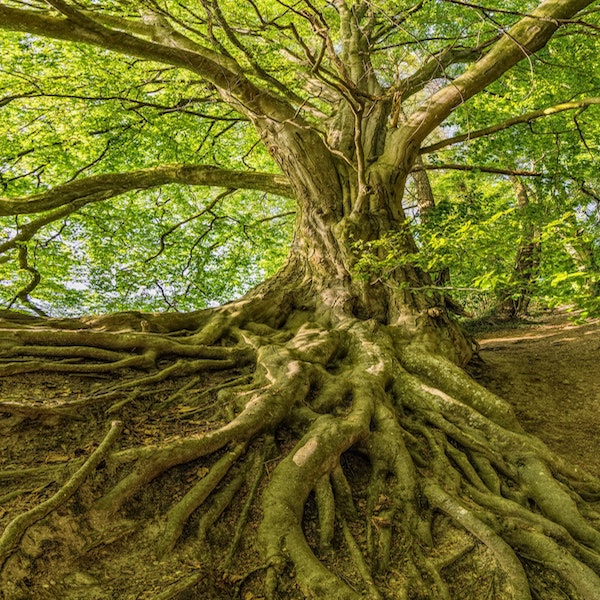How to Grow Healthy and Stable Tree Root Systems
•Posted on February 05 2021

People often focus on the part of a tree they can see when the most important part is what lies beneath.
Experienced arborists know that when cultivating trees, promoting stable root systems is vital. Read on to learn more about tree root systems and how to grow healthy ones.
What is the Purpose of Tree Roots?

Roots are an essential part of all vascular plants, including trees. A tree's roots have two primary functions.
The first is to absorb water and minerals to nourish the tree, and the second, of course, is to anchor the tree.
What are the Different Kinds of Tree Roots?
There are three major classes of tree root systems:
- Taproots
- Fibrous roots
- Adventitious roots
Taproots help a tree find water when it's first planted, and then multiple fibrous roots take over.
Adventitious roots are other types of roots that develop when trees have to adapt to stressful conditions such as flooding.
How Do Tree Root Systems Grow?

One of the first jobs of a seed is to develop a taproot.
The taproot tends to grow straight down in search of water and serves as a temporary anchor for the young tree.
In most cases, the taproot is eventually surpassed by fibrous roots that grow more horizontally.
Most trees develop a layer of roots near the surface and another layer that extends much deeper into the ground.
This two-layered system allows trees to flourish in a variety of weather conditions.
Contrary to popular belief, tree roots do not grow toward anything.
They simply take the path of least resistance, continuing to grow as long as they encounter the water and minerals they need.
What Can You Do to Establish Healthy Tree Roots?

Till the Ground Before Planting
Since the roots of a new tree start out small, it's essential to loosen the soil and remove as many large rocks as possible before planting your tree.
Give Each Tree Plenty of Space
When planting a tree, you should expect the root system to branch out in every direction, which is why you shouldn't place it too close to your house or driveway.
Water Thoroughly
Plan on watering your tree regularly during that crucial first year.
Infrequent deep watering is preferable over frequent shallow watering because it stimulates the development of deeper roots.
Use a Quality Fertilizer

Since up to to 80% of a tree's feeder roots occupy the top few inches of the soil, trees can benefit from fertilizers spread on the soil's surface.
Fertilizers that are high in phosphorus and potassium will encourage healthy root growth.
Some specific ingredients to look for in a tree fertilizer are bone meal, monopotassium phosphate, potassium sulfate, and potassium chloride.
Just because your tree is well established doesn't mean you're out of the woods.
Although a tree's average life span ranges between 100 to 200 years when growing in its natural habitat, trees used in suburban landscaping often die before the age of 25.
Using fertilizers helps mimic the conditions that allow trees to flourish in the wild.
Whether you've just planted a tree or it's been there for years, applying fertilizer is highly beneficial to continued root development.
We offer a large selection of quality fertilizers, including fertilizers high in phosphorus and potassium.
And if your tree's roots become so healthy that they begin clogging your sewer lines or pipes, an application of copper sulfate can help.
You can shop for some of these below!
Related Posts:
- Epsom Salt Formula for Tree Stump Removal
- 7 Reasone to Keep Copper Sulfate Handy in Your Home
- The Role of Root Health in Your Plants and How to Improve it
Comments
0 Comments
Leave a Comment